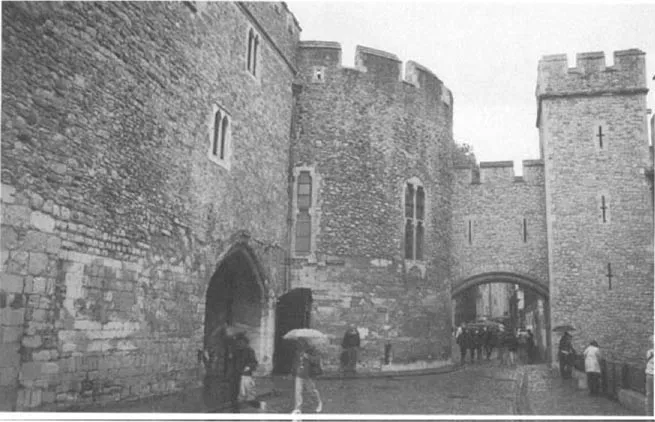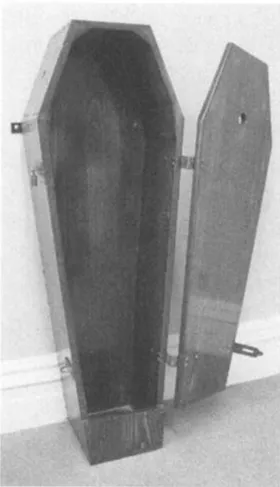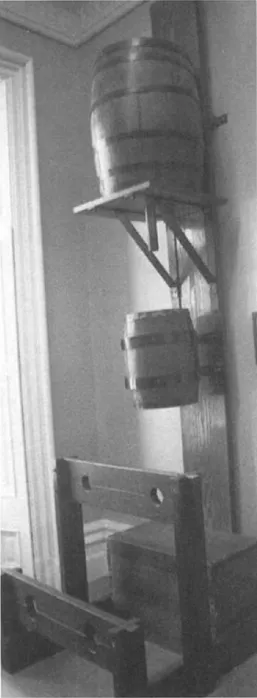![]()
1
GOING TO GAOL
“The prison [at Alba Fucens in central Italy] is a deep underground dungeon, dark and noisesome…with so many shut up in such close quarters, the poor wretches were reduced to the appearance of brutes. And since the food and everything pertaining to their other needs were so foully commingled, a stench so terrible assailed anyone who drew near it that it could scarcely be endured.” Such is the disturbing scene depicted by the 1st century AD scribe named Diodorus Siculus.1
Another early depiction of ancient prisons comes from historian Sallust who described the 2nd century AD prison in the Roman forum as “a place about 12 feet below the surface of the ground. It is enclosed on all side by walls…Neglect, darkness and stench make it hideous, and fearsome to behold.”2 The need to restrain misfits, and to punish evil-doers is as old as human society itself. With the evolution of cities and the political institutions to govern them, rules were written and dungeons constructed to formalize the reasons and the places for such incarcerations.
In England, the evolution of the jail system began following the conquest of England in 1066 by William of Normandy, who built the first Tower of London. A century later, Henry II ordered his sheriffs to build jails in each county. During this period, however, except for the notorious Tower, prisons were used to house misfits and not to punish crimes. Actual punishment usually consisted of mutilation, humiliation, exile or execution. Many an early prison became infamous over the centuries. Besides the Tower of London, a popular London attraction to this day, there was the Doge’s prison in Venice. Although one of the city’s most beautiful buildings on the outside, it was a brutish dungeon on the inside where anyone could end up based solely on an anonymous letter; no proof needed.
The famous Tower of London is now a popular tourist attraction in England.
In France, the Bastille is renowned for its role in the start of the French Revolution when the citizens stormed it to free political prisoners. Devil’s Island was a feared penal colony, which the French operated in the steamy south Caribbean from 1887 until 1938, and was the locale for the popular movie, “Papillon.”
The first effort at incarceration for the purpose of reforming the inmate was that at Bridewell Palace in London, and was used largely to reform vagrants. In 1609, King James I required each county to open a “bridewell” as they came to be called. With the arrival of the Industrial Revolution in the late 18th century, prisons were used to reform the “misguided” lower classes, and make them into better workers. Indeed, it was common practice for prisoners to be “rented” to factory owners as a source of cheap labour.
Prior to the wide-scale settlement of Upper Canada (later Ontario), lock-ups were confined to military garrisons, although a publicly subscribed jail may have been built in Gananoque during this time.3 When Upper Canada was created under British law, following the arrival of the United Empire Loyalists,4 the notion of the jail was to detain an accused until the appropriate punishment could be meted out.
Over the decades, three levels of “gaol” appeared in Ontario—the county jail, the local lock-up, and the federal penitentiary, or “big house.” To administer the colony, Upper Canada’s first administrator, Lieutenant-Governor John Graves Simcoe, divided the area into four districts, and in each district appointed justices of the peace to carry out the law, complete with a courthouse and jail. At first these were little more than two-storey log buildings with the court above and the cells below. They were located at New Johnstown (Cornwall) for the Eastern District, Kingston for the Midland District, Newark (Niagara-on-the-Lake) for the Home District, and L’Assomption (Sandwich, later Windsor) for the Western District.
But even from the start, the jails were notoriously inadequate. With little funding to provide security, escapes were routine and jailers were, on occasion, required to keep prisoners locked in their own homes. The scarcity of funds also forced the legislature to require that two cells in each jail be set aside as “bridewells” and so began the tradition of Ontario’s jails housing the poor and the insane together with the criminals. In fact, in many cases, inspection reports showed the jails as containing more “non-criminals” than criminals.
By 1826 the four original districts had been further divided into eleven, and, by the 1840s, district jails had been completed in Cornwall, Kingston, Niagara, York, Sandwich (Windsor), Brockville, Cobourg, London, L’Orignal, Hamilton, Perth, Picton, Barrie, Simcoe, Woodstock, Goderich, Peterborough, Belleville, Ottawa and Guelph. Following the creation of the county system of government in 1849, Ontario grew into an administrative system of 42 counties,5 with Dufferin County the last to be formed in 1881.
As with the districts, to qualify for separate municipal status, each county was required to erect a courthouse and jail. In many cases the jails were simply a wing added to the rear of the courthouse. In other cases, the jails were constructed separate from the courthouse, many displaying the finest architectural styles of the day, from Romanesque, to Italianate, to Classical, or to Gothic.
Meanwhile, newly created municipalities, such as towns, townships, villages and cities, were empowered to create their own constabularies and to construct lock-ups. Established places like York and Hamilton already had their own courts and jails as early as the mid-1830s. In the new municipalities, cells were usually situated in the basements of the town halls. In other cases, as well as in “police” villages,6 separate lock-ups might be constructed. These small jails ranged from a single cell up to as many as five. They were the responsibility of a local constable whose myriad other responsibilities might have ranged from rounding up stray animals to sweeping the streets. With the creation of the Ontario Provincial Police in 1909,7 many of these jails were replaced by detention cells in newly built OPP stations.
Entombment in this coffin-like box was a common form of punishment. This device is on display at the Prison Museum in Kingston.
The third level of prison was the “penitentiary.” It was here that prisoners were sent as “penance,” to serve out long sentences. While the local lock-ups or county jails were intended only for short-term stays, the penitentiary replaced the gallows for many of the hundreds of petty crimes for which the penalty was death. Ontario’s first “pen” was one at Portsmouth near Kingston, which opened in 1835. It was followed by the Central Prison in Toronto, built in 1875, and other federal penitentiaries at Collins Bay, Millhaven, Joyceville, and a new women’s pen,8 all in the Kingston area.
In northern Ontario, where districts still existed, the Ontario Department of Public Works undertook the building of the courthouses and jails, and, from the 1870s, appointed provincial constables to police them. By 1897 in addition to the district jails, a dozen local lock-ups had been built across the north by the Ontario government.
But local autonomy was not serving the jails well. By the late 1850s local politicians, after having been obliged to build the jails, showed little interest in maintaining them. In 1860, the Board of Inspectors for provincial gaols and asylums issued a memo on the “Construction and Management of Common Gaols.” The jails, they observed, were “in their present state an obstacle to discipline and reform.”9 Among the reforms proposed, the memo included the separation of prisoners on the basis of sex, age, moral character and degree of guilt. Physically, the facilities should include hardwood floors, wrought iron doors, outside privies and ventilation to the outside. Cell ranges should be internal and constructed back to back. To make sure that these regulations were followed, a system of regular inspections was established. To this day, the reports of the “common gaol” inspectors provide some of the most vivid accounts of the grim life inside Ontario’s early jails.
This directive was replaced in 1881 by a still more detailed order-in-council which listed 100 regulations for the “Government of Common Gaols of Ontario.”10 These included job descriptions for the sheriff who oversaw the jails of the county, for the “gaoler” who was responsible for their day-to-day operation, and for the “turnkey” who watched the inmates directly, as well as regulations governing matrons and jail surgeons.
The list prescribed prisoners’ activities, clothes and meals. Punishments included the “hard bed,” a diet of bread and water, or confinement in a dark cell, and could be imposed for such infractions as assault, indecent behaviour, bad language, or simply for neglecting to keep the cell clean. Punishments in the penitentiaries were considerably more brutal, and included floggings, water torture and entombment.
This punishment mechanism, a type of water torture, is on display at the Kingston Prison Museum. It gave prisoners the sensation of being drowned.
As for the jail buildings themselves, the order decreed that no animals shall be kept in the yards, that no wood or other material shall be piled against the walls, that no trees or shrubs shall be planted in the jail yard, that no privies shall be located inside the buildings, and that padlocks shall weigh no less than two-and-a-half pounds. The final regulation of that directive resonates to this day with journalists as “no person shall be allowed access to any prisoner for the purpose of interviewing him or her, with a view to publishing a report of such interview.”11
Despite these requirements, criticism continued to be heaped upon Ontario’s jails even up until recent times with modern-day grand juries calling them “black holes” and “unfit” for humans. Finally, in 1968, the province took over administration of the county jails and within less than a decade had closed 19 of the worst.12 With the introduction of the super-jail concept in the later 1990s, many of the remaining “county” jails were closed as well.
Within those walls, the ghosts of the many who were executed may still be watching. Prior to 1760, more than 150 offences were punishable by death. By the time Upper Canada’s first jails were under construction, this had been reduced to 12. By 1841 the number had been dropped to three—murder, rape and treason. From Confederation until the abolition of capital punishment in 1976, Canada employed its own official executioner. Not surprisingly, to avoid retribution by families of those executed, few of Canada’s hangmen used their own names. In fact, one name, Ellis, was the pseudonym most commonly used during that time.
The name originated with Arthur English, cousin of England’s hangman who had adopted the phony name of “John Ellis.” English was hired in 1913 and adopted the name Arthur Ellis. After presiding over 600 executions around the world, he quit when he miscalculated the weight of a woman who had been sentenced to death, resulting in her torso severing from her head. Following his retirement in 1938, he was replaced by another “Arthur Ellis.” Canada’s last hangman used “John Ellis” and continued in this capacity for several years following the formal abolition of capital punishment in Canada. (Some capital offences remained under the National Defence Act for a few more years.)
Canada’s last hanging occurred in 1962 with the double execution of Arthur Lucas and Ronald Turpin in Toronto’s Don Jail. Lucas had murdered Thomas Crater and Carol Newman, while Turpin had murdered police constable Fred Nash. Years later, the judge who had sentenced Turpin to his fate reflected that the one good thing about Turpin’s execution was that it was Canada’s last.
![]()
2
THE COUNTY GAOLS
As the 18th century drew to a close, what we call Ontario today was an untamed wilderness. Aside from the small groups of Aboriginal peoples, its few permanent inhabitants were French settlers along the Detroit River, and military settlements near Kingston, York and Newark (Niagara-on-the-Lake). With the end of the American Revolution, refugees who had remained loyal to England streamed northward to avoid persecution and death in the former American colonies. At that time, the only incarceration facilities were to be found in military garrisons.
As more and more settlers arrived, Upper Canada was divided into four districts. To accommodate the spreading settlement, these districts were further subdivided until finally in 1849, the area became a system of counties whose governing councils were responsible for roads, land registry and courts. In fact, no county would be approved without the building of a courthouse and jail. Towns that were selected as county towns grew quickly and many would soon boast beautifully designed courthouses.
BARRIE
For those who love their heritage buildings, Barrie is a less than ideal destination. Over the years most of its key structures have been removed—the downtown railway station, the city hall, the post office, the courthou...



